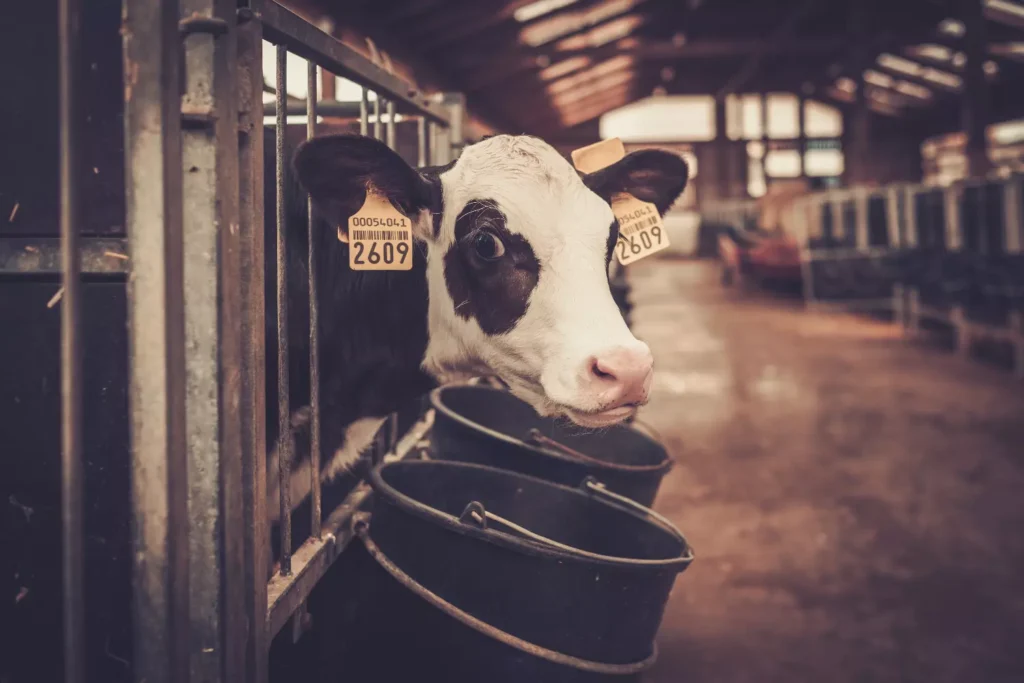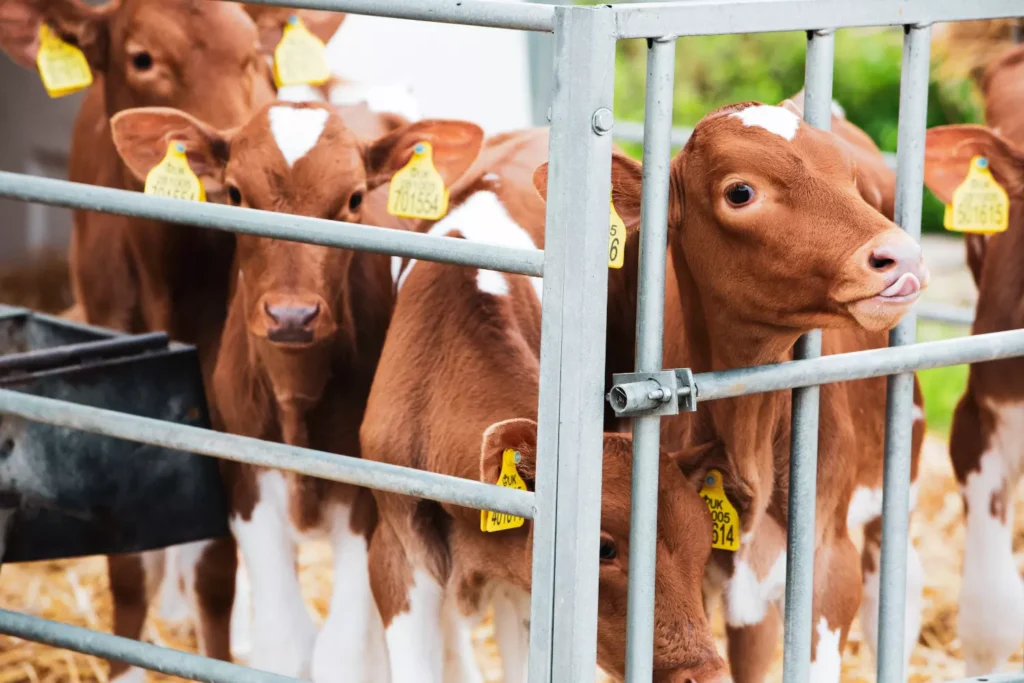
Cryptosporidiosis in calves is a serious disease of calves, which causes diarrhea explosive and growth retardation. It is a concern economic important for farmers and milk producers.
There is currently no vaccine available for this disease. The treatment involves the replacement of fluids and electrolytes, as well as the nutritional support. We have tested several compounds in cattle to determine their efficacy against cryptosporidiosis in calves, but only two are allowed: the lactate halofuginona (Halocur) and sulfate-paromomycin.
Symptoms of Cryptosporidiosis In Calves
Cryptosporidiosis in calves is a disease caused by the protozoan parasite Cryptosporidium parvum. It is a diarrheal disease severe resulting in dehydration and death. The calves are infected when they ingest oocysts of Cryptosporidium in food, water or environment contaminated. The oocysts are released into the environment by infected animals (calves) and can remain infected for months. The oocysts can be ingested by other animals, including humans, who get the disease zoonotic cryptosporidiosis.
The calves that are stressed, infected with rotavirus or coronavirus, or who are receiving antibiotics, are more likely to develop cryptosporidiosis. Infection with Cryptosporidium degrades the immunity of the calves and increases the susceptibility to co-infection with other diseases.
The symptoms of diarrhea in calves due to cryptosporidiosis are diarrhea that is watery or bloody, fever, loss of appetite, and dehydration. The diarrhea lasts 3 to 4 days and is often accompanied by a high level of mucus. Infection with Cryptosporidiosis is very common in dairy herds and may cause disease and loss of calves on the farm.
The occurrence of cryptosporidiosis in calves is much less common in flocks of meat and livestock raised for meat. It is speculated that different systems of management and feeding practices are responsible for this difference. When cryptosporidiosis is combined with rotavirus infections or coonavirus, mortality of calves may increase significantly. The control of rotavirus and the coonavirus in the flock through vaccines can reduce the diarrhea of calves and the associated deaths.
Infection with cryptosporidiosis may also lead to other diseases, particularly respiratory problems and muscle cramps in the calves. It is important to provide supportive care to the affected calves, including fluid therapy, nutritional support and a clean environment. Provide electrolytes to replace those lost through diarrhea is essential for the recovery of calves infected.
If the calves are diagnosed with cryptosporidiosis, must be isolated from other calves and stay in a clean environment. They should provide access to milk or milk replacer and water, and should be fed twice a day. Should be fed a diet rich in protein to ensure that they have the energy to fight the infection. The calves dehydrated to be rehydrated with 2 litres of electrolyte liquid from 2 to 4 times a day.

Diagnosis
Cryptosporidiosis in calves is such a serious disease as Q fever that affects young cattle causing profuse diarrhoea, often associated with dehydration and malnutrition. Currently, there is no vaccine or effective treatment for this zoonotic disease. Calves suffering from this disease have poor weight gain, recovery times are slow and an increased risk of other gastrointestinal diseases.
The infection is spread through the fecal-oral contact with the parasite, but the environmental pollution also allows the spread. The oocysts (eggs sporulated) are extremely resistant to temperature and chemical disinfectants, therefore, the use of individual accommodation for calves and the regular cleaning of the computer power supply can also help to control the disease.
Infection with oocysts cause watery diarrhea in humans and is usually self-limited in immunocompetent individuals, but can put in danger the lives of those with impaired immune systems. The disease is transmitted most commonly through contaminated drinking water because the oocysts are resistant not removed by filtration. Outbreaks associated with water supplies contaminated in Milwaukee and other places have led to the development of preventive measures, including the ozonation of drinking water and the hipercloración of swimming pools.
The disease is rarely observed in cattle, possibly due to different management practices, but there are still significant losses of calves associated with this disease. The disease is recurrent and is difficult to eradicate in the farm, but the general hygiene and the separation of the ill calves may decrease the exposure and the severity of the infection.
Depending on the severity of the case, antibiotics may be indicated in cases with bacterial infections secondary. Calves with cryptosporidiosis are highly susceptible to infection by other pathogens, and should be kept out of the calves was not affected for the duration of your illness.
It is important that farmers understand that cryptosporidiosis in calves has a large economic impact and losses can be substantial for some operations. These losses are mainly due to the cost of the treatment and the lower weight gain of the affected calves. This is the reason why the disease should be taken seriously and handled as much as possible to minimize losses.
Treatment of Cryptosporidiosis In Calves
The clinical symptoms most significant of cryptosporidiosis in calves are diarrhea, anorexia, dehydration, and weight loss. The severity of the disease is related to the number of oocysts ingested, the nutritional status of the affected animal and the presence of other bacteria or viruses in the intestinal tract. The oocysts are shed from the body of the infected animal and can be transmitted to other animals or humans through the water, milk, or contaminated food. The removal of oocysts usually last from 4 to 12 days. They require very low doses of infective oocysts to cause disease in animals immunocompetent and human.
Calves with clinical infection of cryptosporidiosis require fluid therapy to counteract and prevent dehydration. Also need nutrition to provide the power needed to combat the disease and repair its tissues. The affected calves must be isolated from the calves healthy young so the infection can be controlled and does not spread. The use of general practices of sanitation is also important; for example, the cleaning and disinfection of facilities and the separation of buildings by age groups may help to reduce the incidence of cryptosporidiosis in calves.
Although the oocysts are resistant to many drugs, there are some compounds that can significantly reduce the removal and relief of the clinical signs of infection. The paromomycin is one of those compounds. A field test in cattle naturally infected (Cryptosporidium parvum) showed that calves treated with paromomycin showed a reduction of the removal of oocysts and diarrhea less severe than the control calves were not treated.
While there is no vaccine for cryptosporidiosis in calves, research is underway to develop and test preventive strategies. Some experimental vaccines have shown to be promising to reduce the amount of oocysts and prevent diseases.
The livestock, dairy, and veterinary students working with calves, young people must know that they can become infected by contact with the feces of infected animals with cryptosporidiosis. Because Cryptosporidium oocysts are removed, so irregular in the stool of a person (for example, it is possible to not delete a day and then removed the following day), the tests fecal routine should include a check of the parasite. The test results should be confirmed on three different days to make sure that the negative result really does mean that there is cryptosporidiosis present.

Prevention of Cryptosporidiosis In Calves
Cryptosporidium is found throughout the world and affects all species of livestock as we have seen that it also happens with the mad cow disease. Cattle infected with Cryptosporidium develops diarrhea and excreted large amounts of oocysts that spread the disease to other animals. The infection can be prevented by maintaining high standards of hygiene, particularly in the areas of delivery.
Calves infected with Cryptosporidiosis suffer from growth and vigor deficient, and some of the affected calves die. This problem of health of the calves is costly for farmers in terms of reducing the weight of the calf, cost of treatment and additional food necessary for the ill calves reach market weight. It is also costly for consumers of beef and dairy products that can be infected with Cryptosporidiosis, through the consumption of milk, meat or cider freshly squeezed contaminated.
The main methods of control of cryptosporidiosis in calves focus on the cleaning and sanitation of the area of delivery; this includes maintaining separate at all calves infected and non-affected, since the organism is highly infectious. The oocysts have a tough outer shell, which makes it difficult to remove them with disinfectants common farm, such as chlorine and bleach. Other disinfectants that contain hot water or heat, ammonium hydroxide and hydrogen peroxide can destroy oocysts. The air-drying of fecal material for two hours at room temperature is also lethal for the oocysts of Cryptosporidia.
The washing of the hands of the caregiver is critical as cryptosporidiosis is a zoonotic pathogen, which means that humans can also become infected with it. The oocysts are removed in the faeces of calves infected and can spread through contact with these oocysts in the hands, the shoes or the clothing of the caregivers. The infection can also spread to the heifers new to manipulate your bed or use feeders contaminated with oocysts from a calf infected.
The oocysts are passed in the urine and saliva of a calf sick and are carried downstream by rivers, lakes or streams where they can infect other wild animals or livestock. Often, outbreaks of diarrhea in calves occur in the accommodation/grazing livestock mixed (cattle and calves), or when the young lambs are housed with these same animals. The parasite does not have host specificity and can infect people, dogs, cats and other mammals.